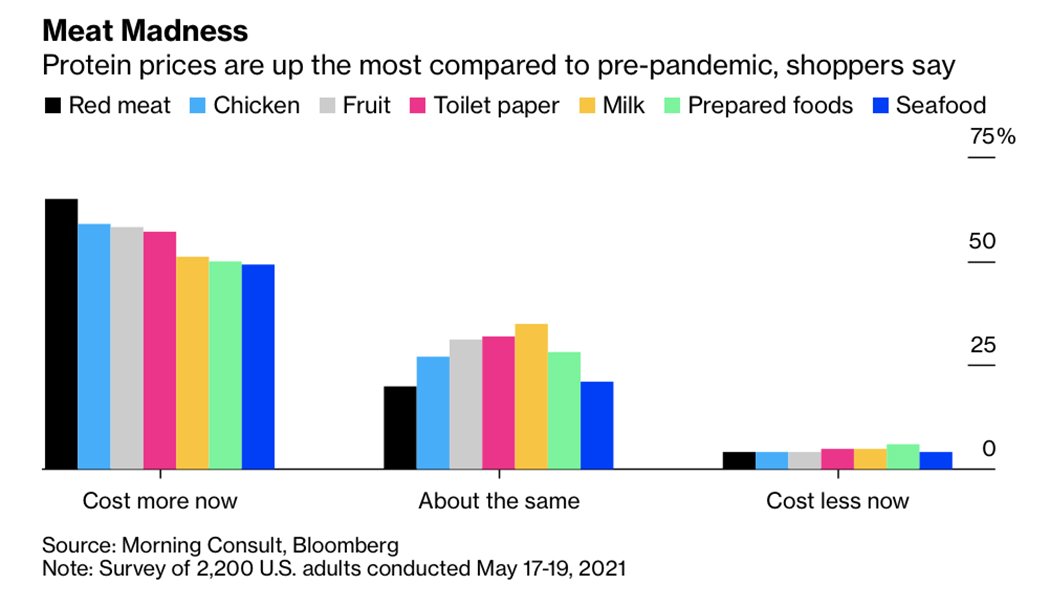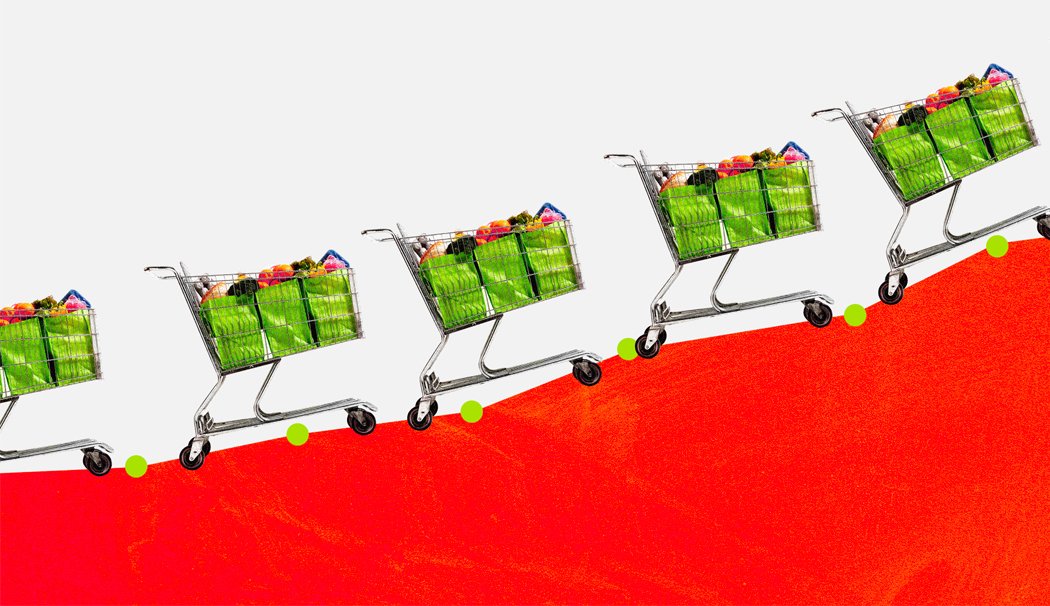High on Inflation?
It’s a word we are all becoming all too familiar with (again).
Inflation is causing households to tighten their belts in more ways than one. The prices of meat are going through the roof, leading to alternate proteins being substituted, such as eggs, beans, and dairy.
This isn’t just a U.S. problem - after climbing a second consecutive month, world food prices hit a staggering 10 year high. The dramatic increase in food costs has always caused instability and fear in the global market. When people can’t feed their families (or themselves), there is often a correlation with civil uprisings and violence.
For context, a typical annual rate of increase in food prices is as follows:
Around 2% in groceries
Around 3% in restaurants
What we are seeing today?
“The Covid-19 pandemic has created massive disruptions in the food system, from farm to fork. In some cases, we have observed and experienced severe food shortages. In others, food cannot reach end consumers and is ultimately wasted. Food waste is not new or novel in our current food system; however, images and reports of whole fields being plowed under and millions of gallons of milk being dumped during a time of such economic hardship and increased food insecurity raises questions about how Covid-19 has impacted food waste along the supply chain.” - Ellison, B. and M. Kalaitzandonakes. "Food Waste and Covid-19: Impacts along the Supply Chain." farmdoc daily (10):164, Department of Agricultural and Consumer Economics, University of Illinois at Urbana-Champaign, September 10, 2020.
INFLATION 101
Top 5 Drivers
High oil prices
Food is transported not only long distances domestically but globally as well. This rise in costs is passed on to the consumer. Oil prices also affect farming also because oil byproducts are in fertilizer.
Climate change
We have all noticed the extreme weather patterns due to climate change. Just this summer many parts of the country felt the impact of Hurricane Ida. Part of the problem is that greenhouse gas emissions trap heat, and cause air temperature to increase. Hot air absorbs moisture which makes it rain less and causes drought conditions. The land becomes arid so when it does rain that water runs off the land and creates flooding, and often ruins crops.
Government subsidies
U.S. government subsidizes corn production for biofuels. The U.S. now uses 37% of the corn supply for biofuel. This is turn creates shortages in the food supply chain- thus raising prices.
The World Trade Organization (WTO) limits the amount of subsidized corn and wheat that countries can add to global stockpiles. The U.S., European Union, and other developing countries heavily subsidize their agricultural industries. This reduces the amount of food available and increases food prices.
Increase in meat consumption
As more countries look to continue to develop, they adopt more of a “western diet”, which means an increase in meat consumption, especially pork. According to Globe Newswire, around half the world's pork is consumed in China, where urbanization and rising incomes continue to drive pork consumption upward.
More meat means more grain to feed the animals. It takes about 9 calories of vegetables to produce 1 calorie from animals. As you can see, it isn’t a very efficient system to feed billions of people. More grain demand means higher grain prices. The increase price of meat will bring down the demand as less people can afford it.
Supply and demand
Simple economics here- as the demand for a particular good or service increases, the available supply decreases. When fewer items are available, consumers are willing to pay more to obtain the item—as outlined in the economic principle of supply and demand. The result is higher prices due to demand-pull inflation.
When quarantine orders started due to COVID-19, people panicked and started to stockpile food and household goods. We saw some relief for a while but are now again seeing grocery shelves empty while offshore goods wait for weeks in our ports to get unloaded.
There is no crystal ball that can tell us when things will get better and prices will be more bearable. ‘
However, According to MarketWatch, “the central bank officially predicts inflation will drop back down to 2.2% in 2022, but that's 0.4 percentage points higher than its forecast last December.”
December of 2022 might seem a long way away, so until then, please consider doing your part as a fellow human being. Avoid hoarding products- this only exacerbates the issue. Considering donating to your local food bank.
Stay calm and carry on.
This too shall pass.




